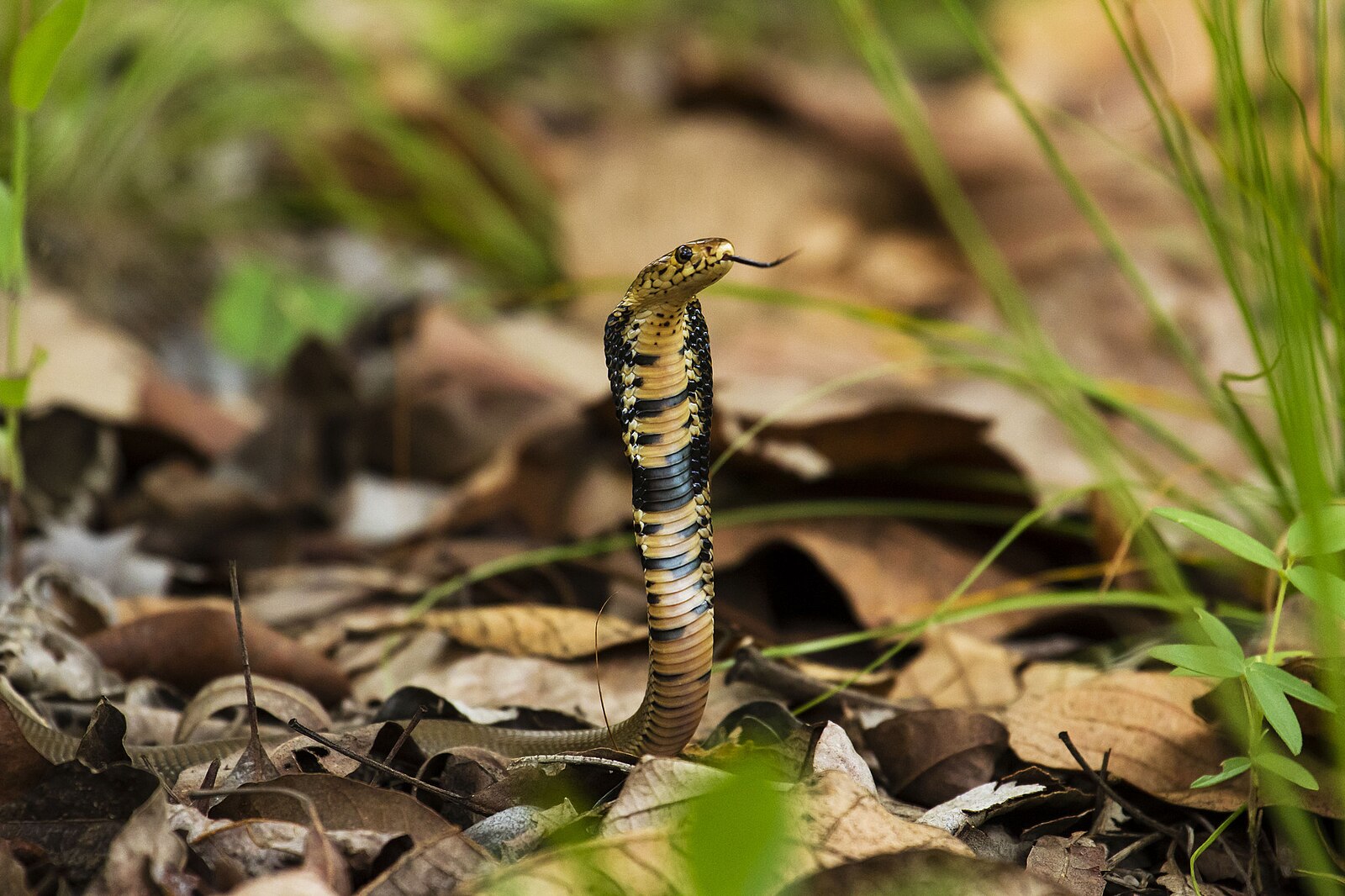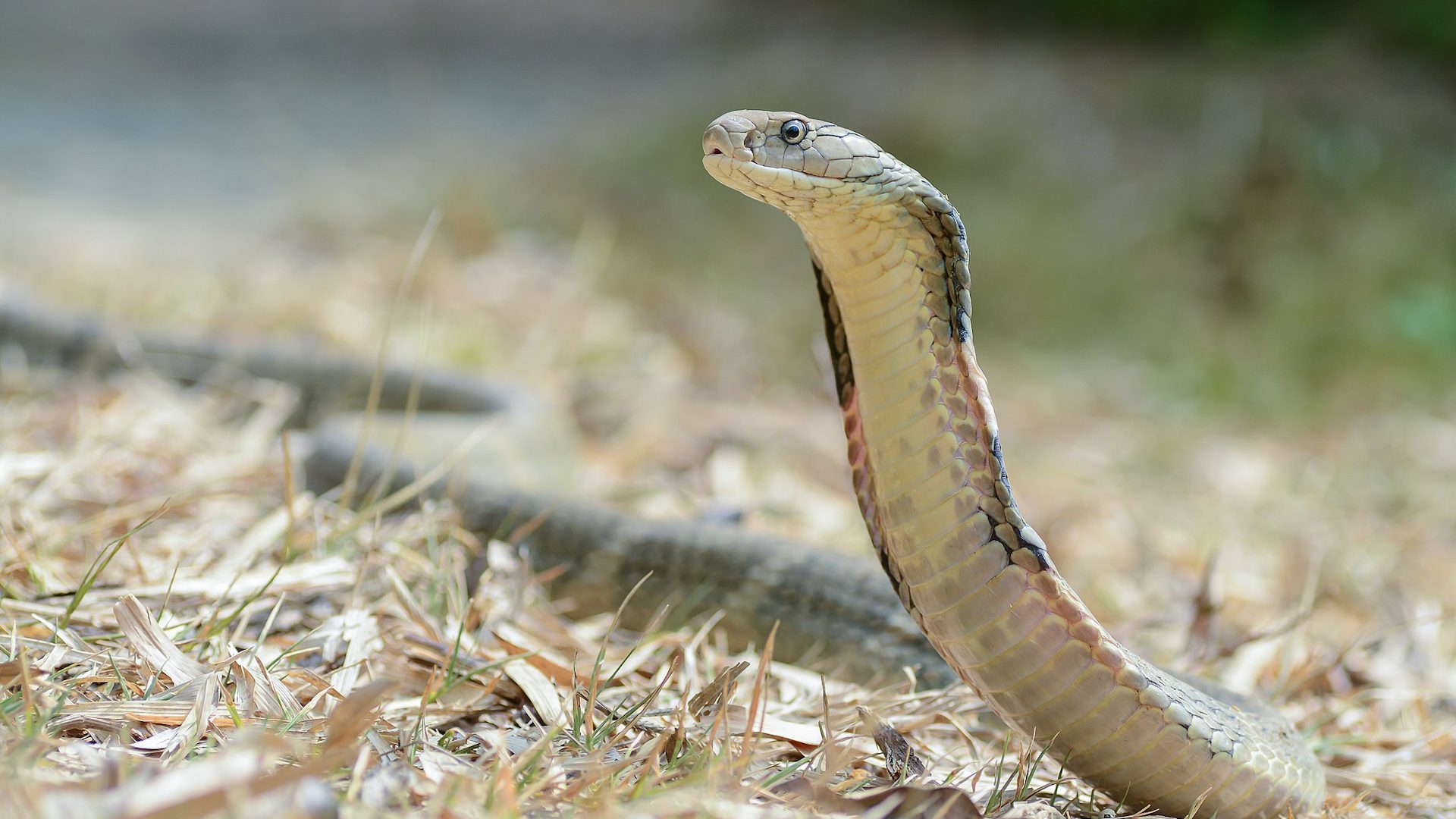In the shadowy canopies of forests across the globe, a remarkable predator silently navigates the branches with surprising agility. The arboreal mamba, particularly the Eastern green mamba, represents nature’s perfect fusion of deadly venom and exceptional climbing abilities. Unlike many of their ground-dwelling relatives, these serpents have evolved specialized adaptations that allow them to ascend trees with remarkable ease, turning the three-dimensional world of forest canopies into their hunting grounds. These elegant yet lethal creatures challenge our understanding of snake locomotion while presenting a fascinating study in evolutionary adaptation. As we explore the world of tree-climbing venomous snakes, we’ll discover how these remarkable reptiles have mastered life above the forest floor.
The Eastern Green Mamba: Master of the Canopy
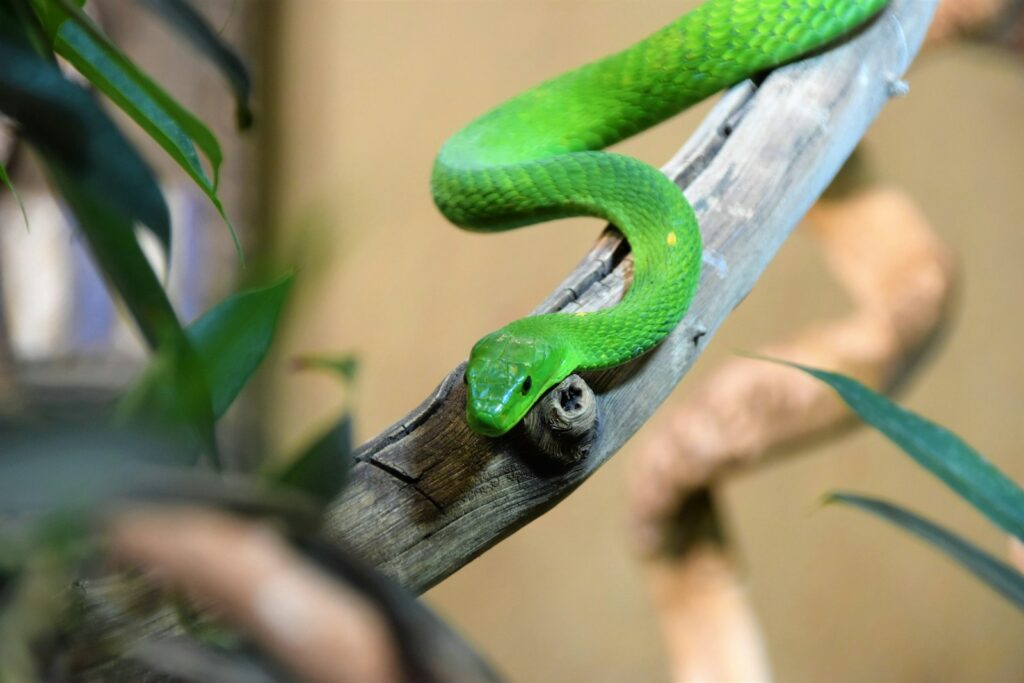
The Eastern green mamba (Dendroaspis angusticeps) stands out as one of the most accomplished arboreal venomous snakes in the world. Native to the coastal regions of southern and eastern Africa, this slender serpent spends most of its life in trees, rarely descending to the ground except when necessary. Their brilliant emerald green coloration provides perfect camouflage among the leaves, making them nearly invisible to both prey and potential threats. Eastern green mambas can grow to impressive lengths of 6-7 feet, yet maintain the slender, lightweight build essential for navigating thin branches without causing them to break. Their remarkable ability to remain motionless for extended periods while hunting makes them one of Africa’s most effective ambush predators in the treetops.
Evolutionary Adaptations for Arboreal Life

Tree-climbing venomous snakes like the green mamba possess specialized physical adaptations that facilitate their arboreal lifestyle. Their bodies feature a laterally compressed form—flattened from side to side rather than top to bottom—which helps distribute weight more effectively across branches. The scales on their ventral (belly) surface have slight modifications that provide better grip on bark and branch surfaces, preventing dangerous falls. Additionally, their extraordinarily powerful abdominal muscles allow them to extend portions of their body horizontally across gaps between branches without support, a feat impossible for most other snake species. Perhaps most remarkable is their advanced binocular vision—unusual among snakes—which enables them to accurately judge distances when moving through the complex three-dimensional environment of the forest canopy.
Climbing Techniques and Locomotion
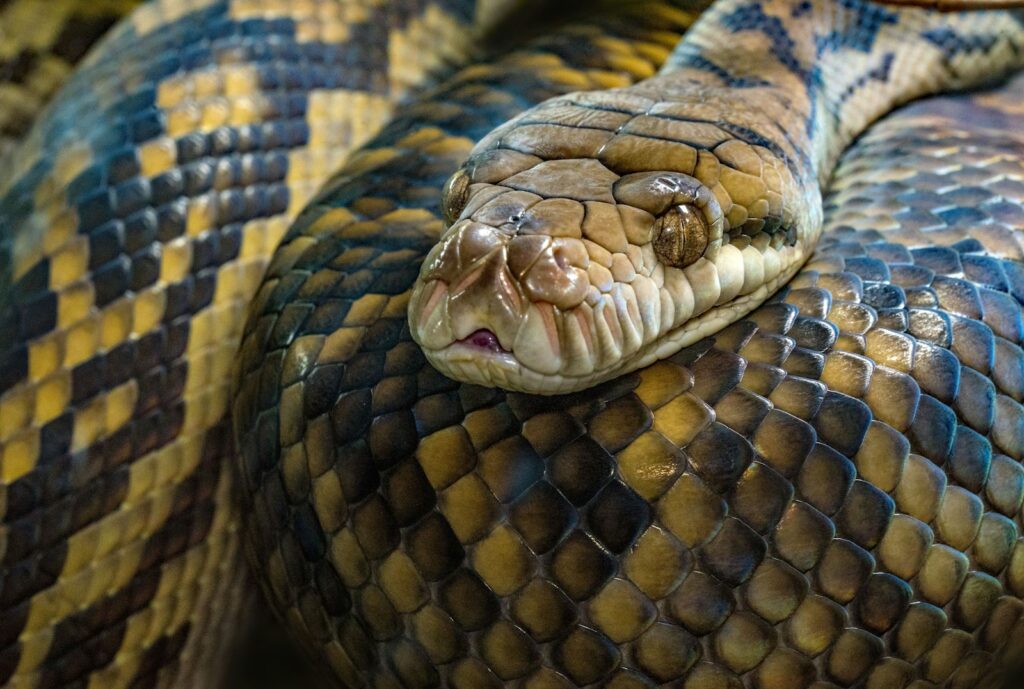
The climbing technique of arboreal venomous snakes differs significantly from that of their terrestrial cousins. Rather than the familiar side-to-side undulation seen in ground-dwelling snakes, tree climbers employ a specialized form of movement called “concertina locomotion,” where they anchor the rear portion of their body while extending the front portion forward, then secure the front and pull the rear portion up. When traversing horizontal branches, they use a modified form of lateral undulation, gripping the branch in multiple places to maintain stability. Some species, including the green mamba, can ascend vertical trunks by creating S-shaped curves with their body against the bark, using opposing forces to maintain position while moving upward. Their remarkable body control allows them to navigate between branches with minimal movement, reducing the chance of detection by prey or predators.
Venom Characteristics and Hunting Strategy
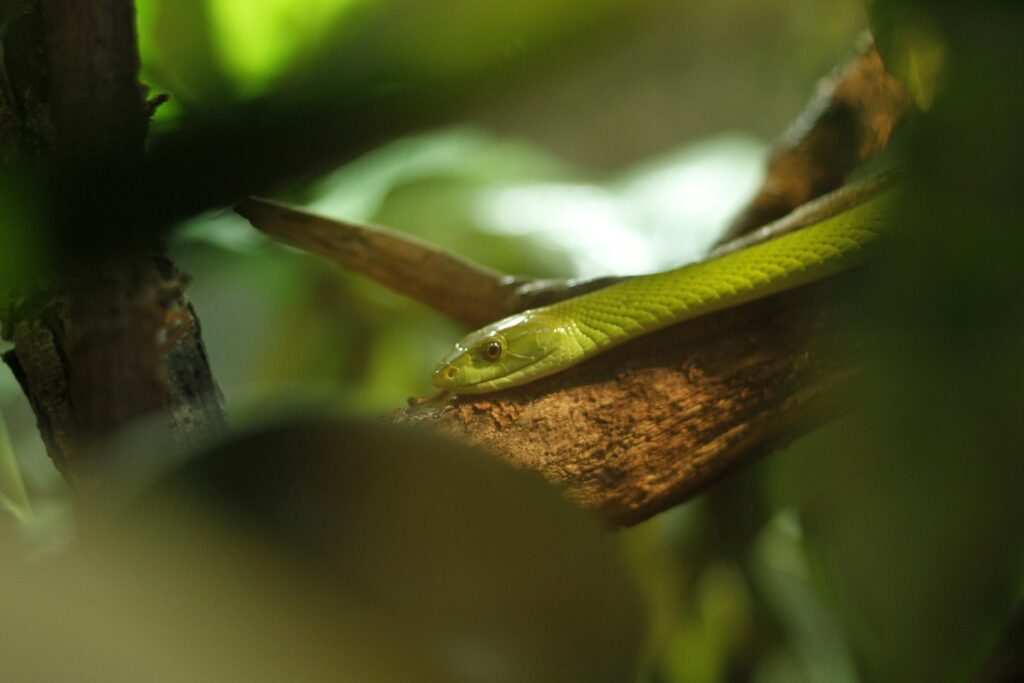
The Eastern green mamba possesses a highly potent neurotoxic venom that targets the nervous system of its prey, causing paralysis and, ultimately, respiratory failure. This fast-acting venom is perfectly suited to their arboreal hunting strategy, as it quickly immobilizes prey, preventing escape through the complex branch network. Unlike some venomous snakes that track bitten prey, the mamba typically maintains contact with its victim after striking, following it until the venom takes effect, then consuming it whole. Their specialized venom delivery system features front-fixed fangs that fold against the roof of the mouth when not in use, allowing for precise strikes in the confined spaces between branches. This combination of potent venom and arboreal hunting expertise makes them extremely efficient predators in their forest habitat.
The Bamboo Pit Viper: Asia’s Arboreal Assassin
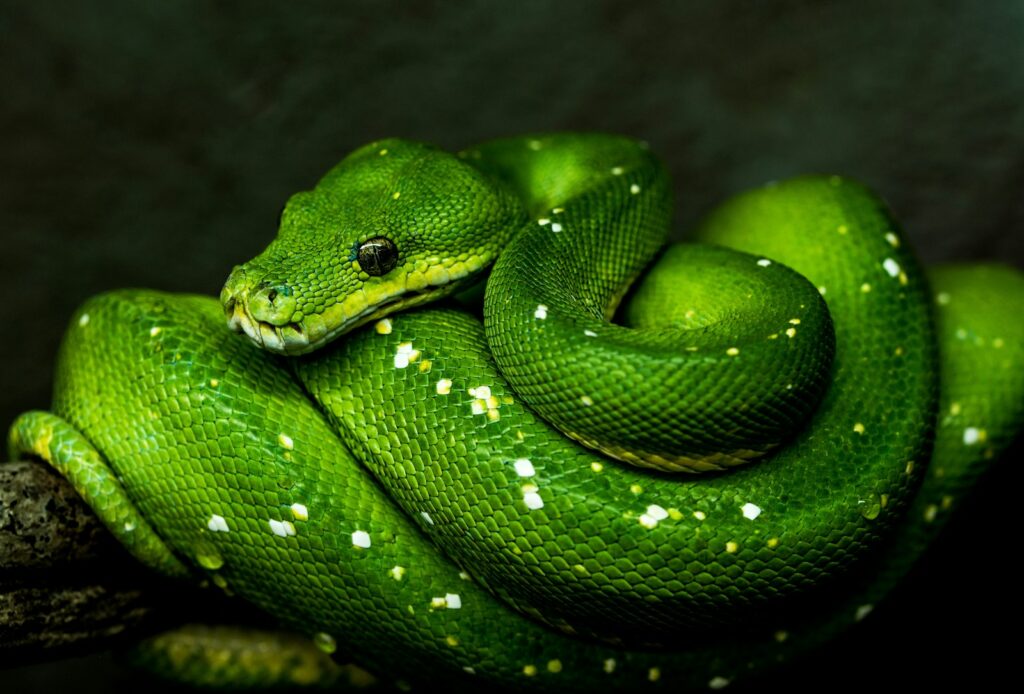
While mambas dominate African treetops, Asia has its own impressive arboreal venomous snake: the bamboo pit viper (Trimeresurus species). These strikingly beautiful snakes display remarkable color variations from bright green to yellow, red, or brown, depending on the specific species and habitat. Unlike the mamba’s neurotoxic venom, pit vipers possess hemotoxic venom that destroys tissue and prevents blood clotting, making even minor bites potentially dangerous. Their most distinctive feature—and key to their arboreal success—is their prehensile tail, which functions like a fifth limb, allowing them to anchor securely to branches while extending their body to strike or move. The bamboo pit viper’s heat-sensing pits located between the eyes and nostrils provide them with thermal imaging capabilities, enabling effective hunting even in the low-light conditions of dense forest canopies.
The Brown Tree Snake: Invasive Climbing Expert
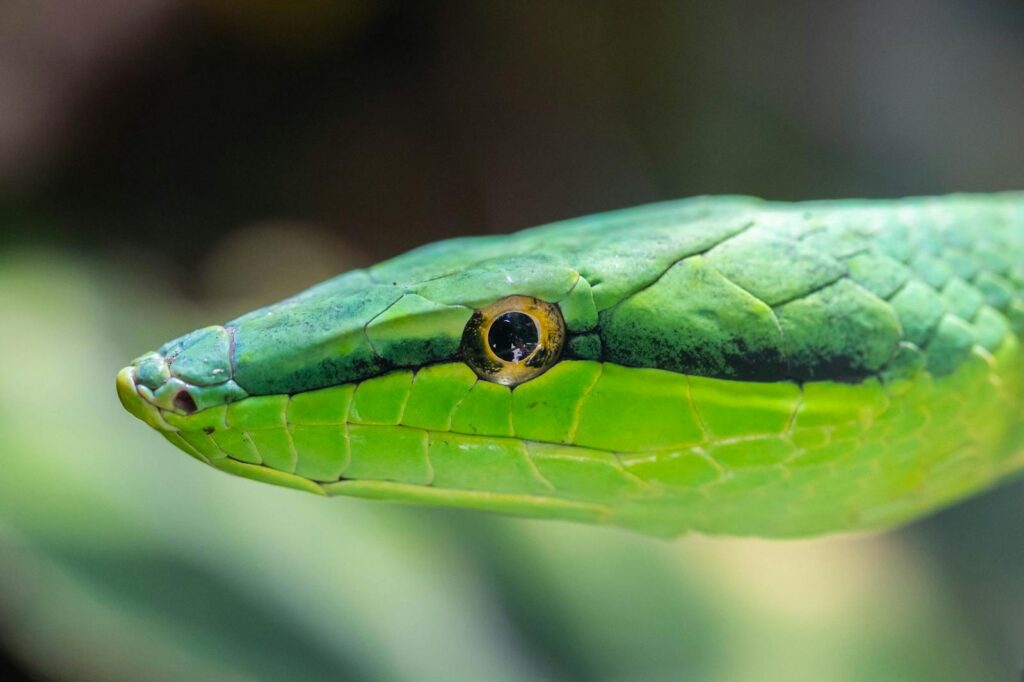
The brown tree snake (Boiga irregularis) represents one of the most notorious examples of an arboreal venomous snake that has caused significant ecological damage outside its native range. Indigenous to northern Australia, Papua New Guinea, and the Solomon Islands, this rear-fanged colubrid has become infamous for devastating the native bird populations of Guam after being accidentally introduced there following World War II. Their exceptional climbing ability allows them to access bird nests that would be safe from ground predators, with individuals documented climbing vertical surfaces and even electrical wires with ease. Though their venom is relatively mild to humans, it’s perfectly suited for subduing small prey like birds and lizards in the treetops. The brown tree snake showcases remarkable flexibility, able to lift two-thirds of its body length vertically without support, making it an unparalleled climber among venomous snake species.
Boomslang: The Back-Fanged Tree Specialist
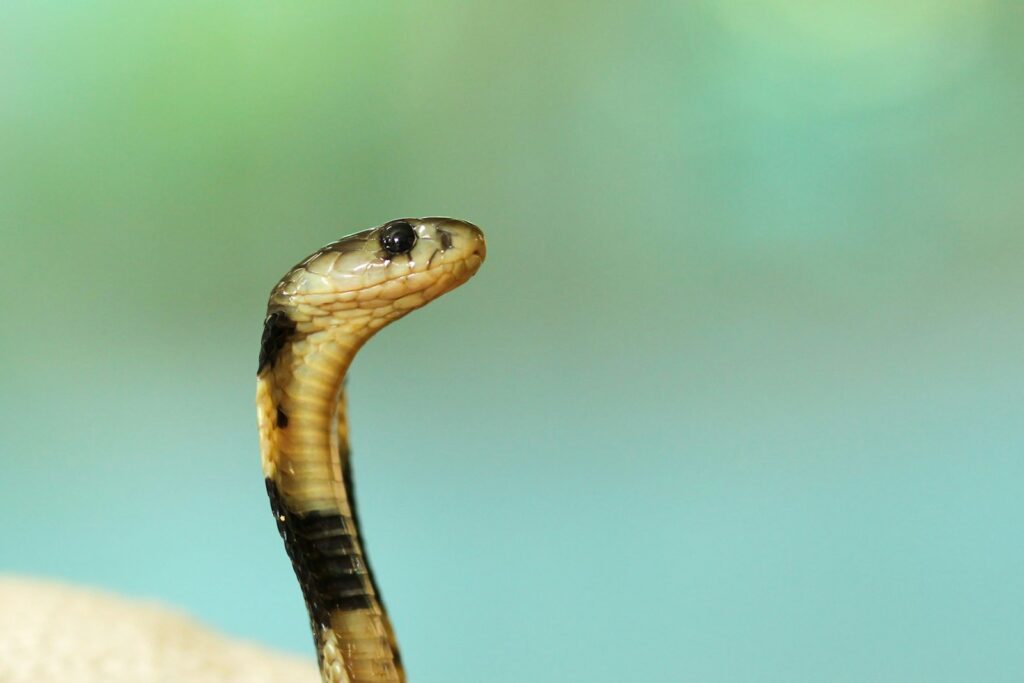
The boomslang (Dispholidus typus) of sub-Saharan Africa represents a fascinating case among venomous tree climbers due to its unique venom delivery system. Unlike front-fanged venomous snakes, boomslangs have enlarged rear fangs that require them to open their jaws up to 170 degrees when biting—a distinctive “chewing” motion that injects potent hemotoxic venom. Despite this seemingly cumbersome arrangement, they remain incredibly effective arboreal hunters with exceptional climbing abilities. Their unusually large eyes—proportionally among the largest of any snake species—provide excellent vision for navigating the complex canopy environment and spotting prey. Boomslangs exhibit remarkable sexual dimorphism, with males typically bright green and females brown, both colorations providing effective camouflage in different parts of their tree habitat. Despite their deadly venom, which causes internal bleeding and can be fatal to humans, boomslangs are typically shy and rarely bite unless handled or cornered.
Predatory Behavior in the Treetops
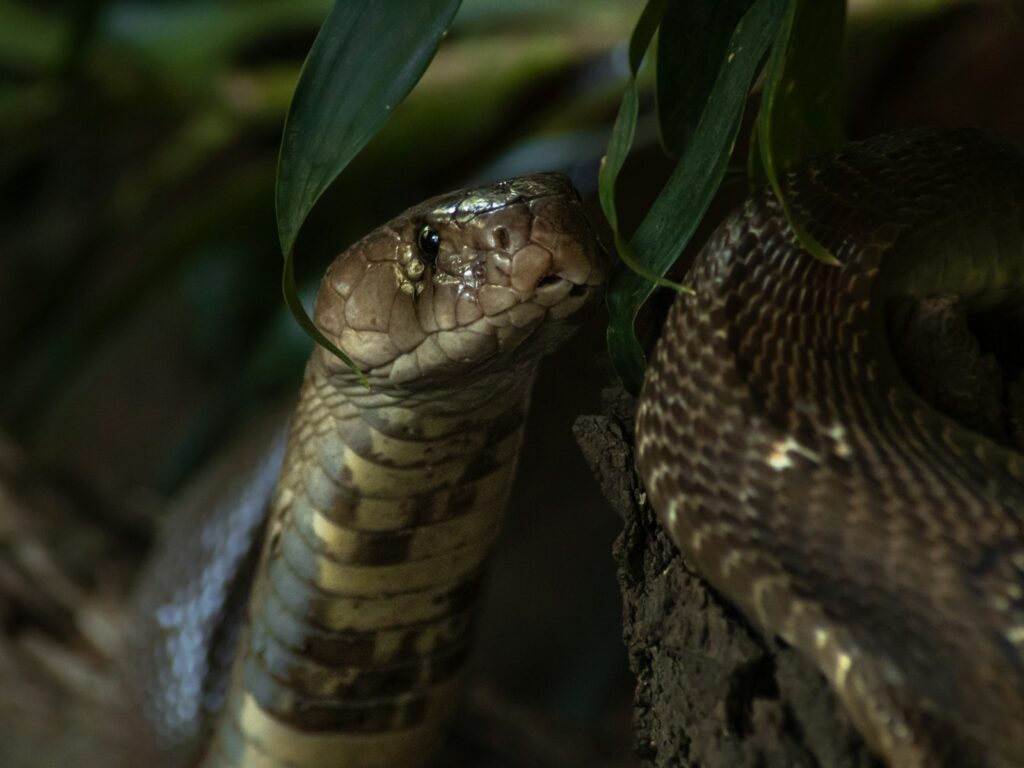
Arboreal venomous snakes employ specialized hunting techniques uniquely suited to their three-dimensional environment. Most species are ambush predators, remaining motionless for hours while camouflaged against foliage or bark, waiting for unwary prey to approach within striking distance. Their keen vision allows them to track movement through the complex visual environment of overlapping branches and shifting light patterns. Many species, including the green mamba, exhibit “perch hunting” behavior, where they position themselves along pathways commonly used by birds or arboreal mammals, increasing their chances of encounters. Unlike ground-dwelling snakes that might follow scent trails, tree-dwelling venomous species rely primarily on visual hunting, though they still utilize their Jacobson’s organ (a specialized scent-detecting organ in the roof of their mouth) when tracking bitten prey through the branches.
Habitat Preferences and Distribution
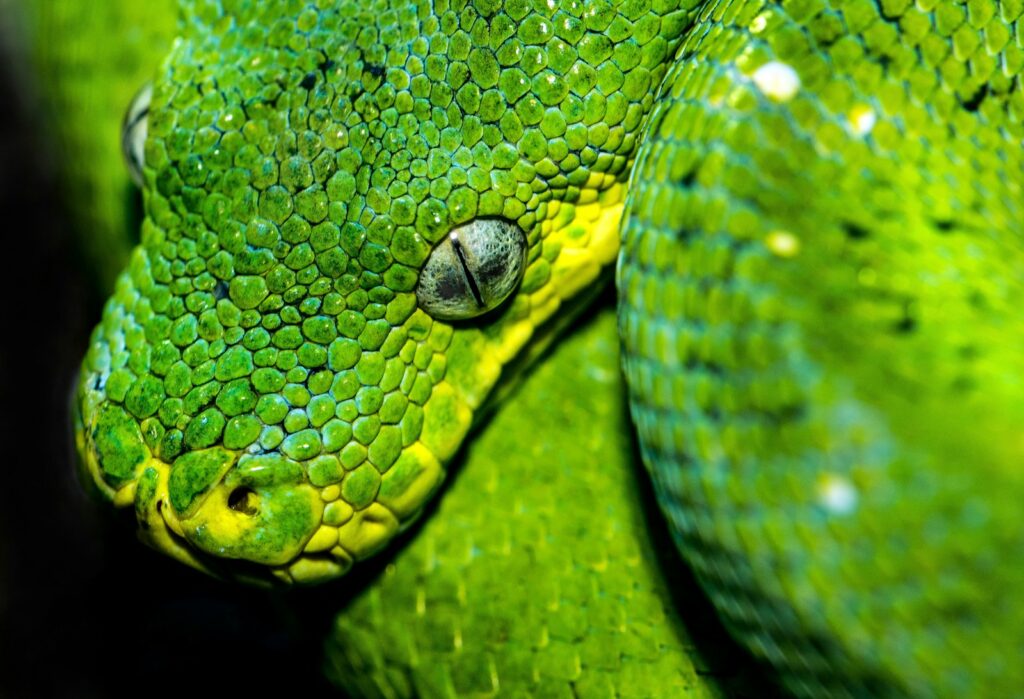
Tree-climbing venomous snakes occupy a wide range of forested habitats across the globe, though they reach their greatest diversity in tropical and subtropical regions. The Eastern green mamba prefers coastal forests and moist woodland savannas of eastern Africa, where the dense vegetation provides both hunting opportunities and protection from predators. In contrast, the bamboo pit vipers of Asia have adapted to diverse forest types, from low-elevation rainforests to mountainous bamboo thickets at elevations up to 8,000 feet. The boomslang demonstrates remarkable adaptability, occupying everything from dense forests to relatively open woodland savannas, provided sufficient trees exist for climbing and hunting. Across all species, common habitat requirements include adequate tree cover, suitable prey populations, and temperature ranges that allow these cold-blooded reptiles to maintain optimal body temperature through behavioral thermoregulation.
Reproduction and Life Cycle
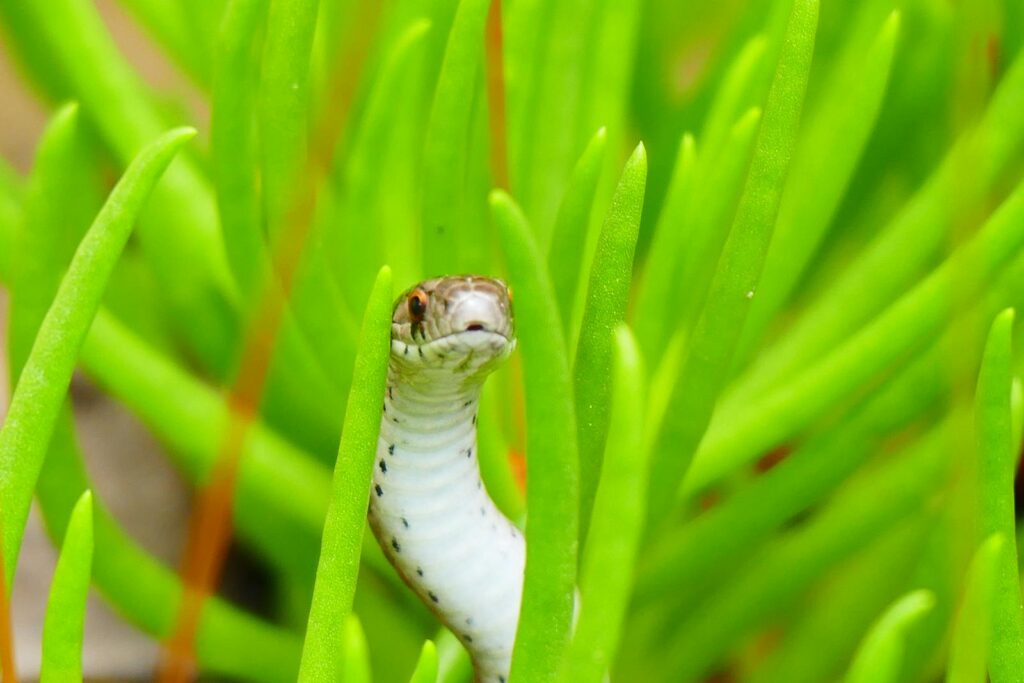
The reproductive strategies of tree-climbing venomous snakes reveal fascinating adaptations to their arboreal lifestyle. Most species, including the green mamba, are oviparous, laying eggs in protected cavities within trees or rotting logs above ground level, providing natural protection from ground-dwelling egg predators. Female mambas typically lay 6-17 eggs and exhibit no parental care after deposition, leaving the juveniles to fend for themselves upon hatching. In contrast, many arboreal pit vipers are ovoviviparous, retaining eggs within the female’s body until they hatch internally, with the mother then giving birth to live young—an adaptation that frees her from the vulnerability of egg-laying and incubation. Juvenile arboreal venomous snakes are born with fully functional venom apparatus and climbing abilities, essential for immediate survival in the challenging canopy environment. Most species reach sexual maturity between 2-4 years of age, with lifespans ranging from 10-25 years in the wild.
Defensive Behaviors and Predator Avoidance
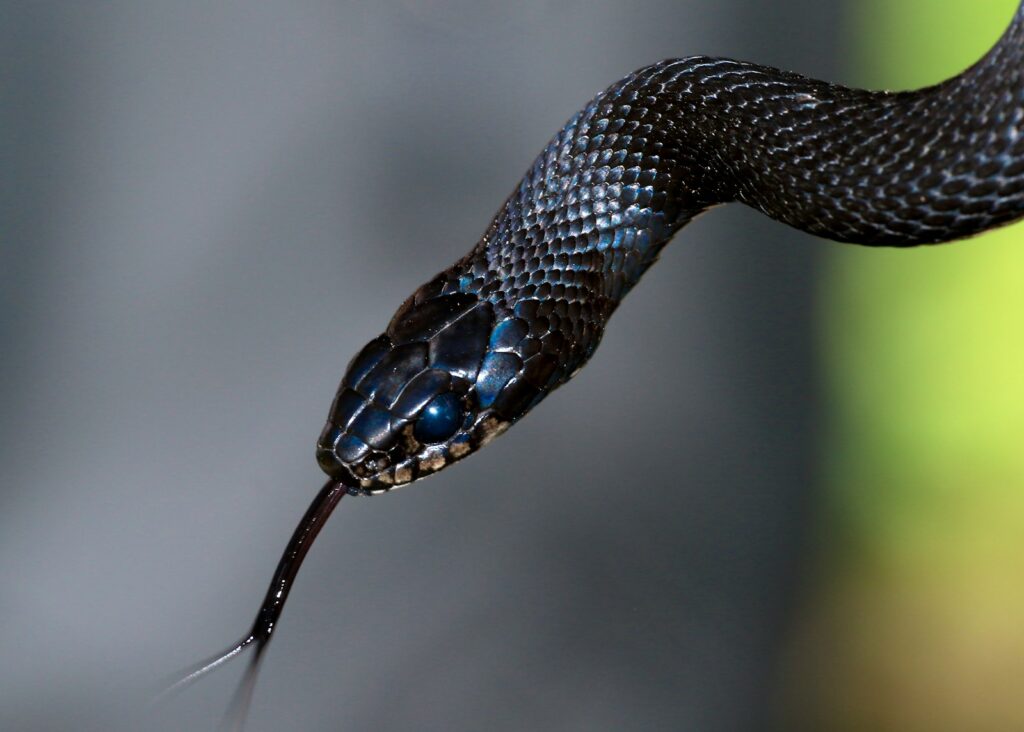
Despite their venomous nature, tree-climbing snakes face numerous threats and have developed sophisticated defensive strategies beyond their toxic bite. When threatened, the Eastern green mamba typically relies first on its exceptional camouflage, remaining perfectly still to avoid detection. If discovered, they often attempt to retreat silently through the branches rather than confront a potential predator. When escape is impossible, many species display warning behaviors—the green mamba will inflate its throat slightly, exposing the black lining of its mouth, while boomslangs inflate their necks to appear larger. Birds of prey represent their primary predators, with species like the secretary bird and various eagles specially adapted to hunt and consume venomous snakes. Remarkably, some arboreal venomous snakes exhibit advanced defensive behaviors including voluntarily dropping from branches to escape threats, using controlled falls to reach lower vegetation or the ground before quickly climbing to safety.
Human Interactions and Medical Significance
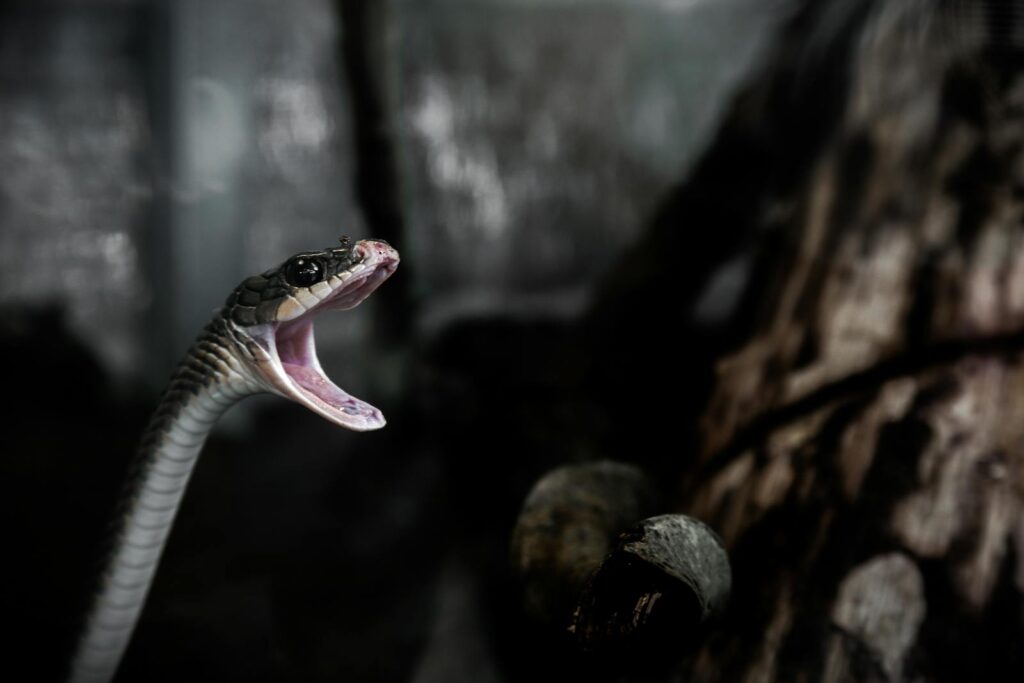
Encounters between humans and tree-climbing venomous snakes occur primarily during agricultural work, forestry operations, or when these reptiles occasionally enter human dwellings seeking prey. The Eastern green mamba, despite its potent neurotoxic venom, rarely bites humans due to its shy nature and preference for remaining high in the canopy. However, bites can be medical emergencies, requiring prompt administration of appropriate antivenom to prevent respiratory failure. The bamboo pit viper is responsible for numerous bites throughout Asia, though fatalities are relatively rare with proper medical treatment. Perhaps most dangerous is the boomslang, whose hemotoxic venom can cause internal bleeding, with symptoms sometimes delayed for hours after a bite, leading victims to underestimate the severity of their condition. Despite their potential danger, tree-climbing venomous snakes play crucial ecological roles as predators and remain important subjects for medical research, with their venoms yielding compounds with potential pharmaceutical applications.
Conservation Challenges and Threats
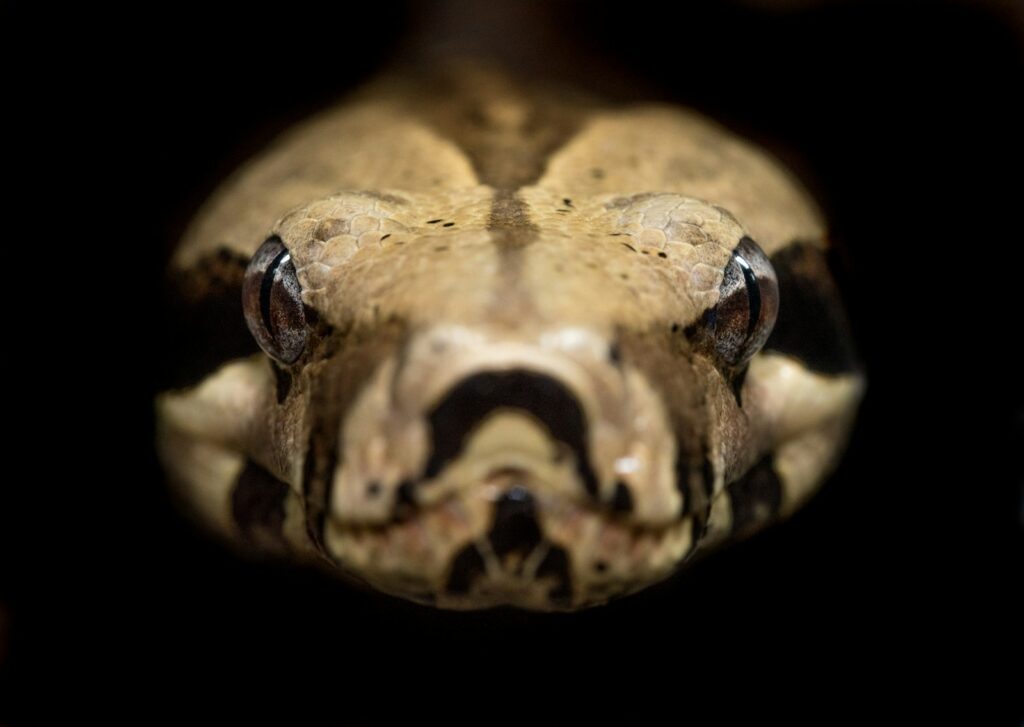
Arboreal venomous snakes face numerous conservation challenges that threaten their long-term survival. Habitat destruction, particularly deforestation, represents their greatest threat, as these specialists cannot adapt to life without trees. The Eastern green mamba has experienced significant population declines as coastal forests in eastern Africa are cleared for agriculture and development. Climate change poses additional threats by altering temperature patterns critical for these ectothermic animals, potentially disrupting feeding, reproduction, and hibernation cycles. Many species also face direct persecution from humans who kill them out of fear, regardless of whether they pose any imminent danger. Alongside these pressures, some arboreal venomous species are targeted by the illegal wildlife trade, either for their venom (used in medical research) or for the exotic pet trade, further stressing wild populations. Conservation efforts focus on habitat protection, public education to reduce persecution, and stricter enforcement of wildlife trafficking laws.
conclusion
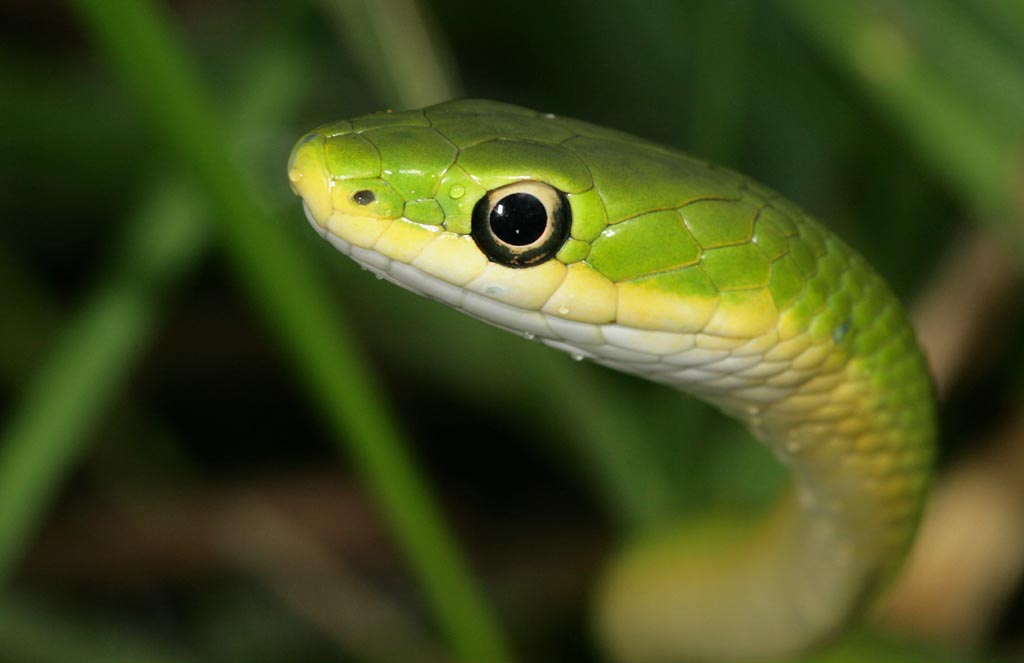
In the complex tapestry of forest ecosystems worldwide, tree-climbing venomous snakes represent remarkable evolutionary success stories. From the lightning-fast strikes of the green mamba to the heat-sensing precision of bamboo pit vipers, these specialized predators have mastered the art of three-dimensional hunting in ways few other reptiles can match. Their adaptations—from specialized scales and musculature to sophisticated venom delivery systems—showcase nature’s extraordinary capacity for crafting perfect predators for every ecological niche. While understandably feared by many humans, these remarkable reptiles deserve both our respect and protection as vital components of healthy forest ecosystems. In their silent, graceful movements through the canopy, they remind us that even the most feared creatures play essential roles in maintaining the delicate balance of our natural world.


